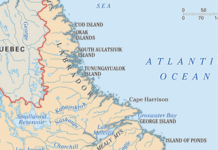Over the last five years, Canada’s installed wind energy capacity has grown by an average of 15% annually, according to a 2017 year-end review from the Canadian Wind Energy Association (CanWEA).
As of the end of 2017, Canada had 12,239 MW of total installed wind capacity, producing enough electricity to supply 6% of Canada’s electricity demand and power 3.2 million homes. Furthermore, over the past decade, on an installed-megawatt basis, Canadian developers and utilities have commissioned more wind power than any other form of electricity generation, says CanWEA.
Notably, in December, a competitive electricity supply auction in Alberta yielded the lowest-ever price paid for wind energy in Canada (a weighted average of C$37/MWh). Also during the auction, the grid operator announced that three companies will together invest C$1 billion to build four large wind farms in Alberta by the end of 2019. Together, the facilities will generate 600 MW of clean electricity, reducing the province’s reliance on coal power.
In terms of new development in 2017, utilities and developers energized 10 new wind energy projects in Nova Scotia, Ontario and British Columbia – collectively bringing enough new clean energy online to meet the needs of more than 90,000 homes.
Taken together, the new projects represent more than 340 MW of new capacity and approximately C$800 million in investment. Importantly, the projects created employment for approximately 3,500 people in construction and operations and maintenance. Municipalities and communities have ownership stakes in half of the new projects – a reflection of a growing global trend toward greater community involvement in wind energy development, notes CanWEA.
Ontario, continuing to lead Canada in installed wind energy capacity, added 119 MW of new wind in 2017, bringing the province’s total installed capacity to 4.9 GW.
The 179 MW Meikle Wind farm, located in northeastern British Columbia, was the largest wind farm commissioned in Canada in 2017. The facility increased the province’s wind power capacity by more than one-third to almost 674 MW and made B.C. the 2017 growth leader.
A trio of Nova Scotia communities took advantage of that province’s community feed-in tariff program to bring three new facilities online – collectively totaling 13.35 MW. Nova Scotia ended the year with 610 MW of wind energy capacity on the grid.
Robert Hornung, president of CanWEA, says, “From Nova Scotia to British Columbia, wind once again proved in 2017 that it is a reliable, scalable solution to climate change that is delivering low-cost energy and local economic benefits to communities across Canada. We’re pleased to be delivering clean and affordable energy to Canadians.”
This year, CanWEA expects over 600 MW of new wind energy capacity to come online, with the number continuing to grow in future years.




